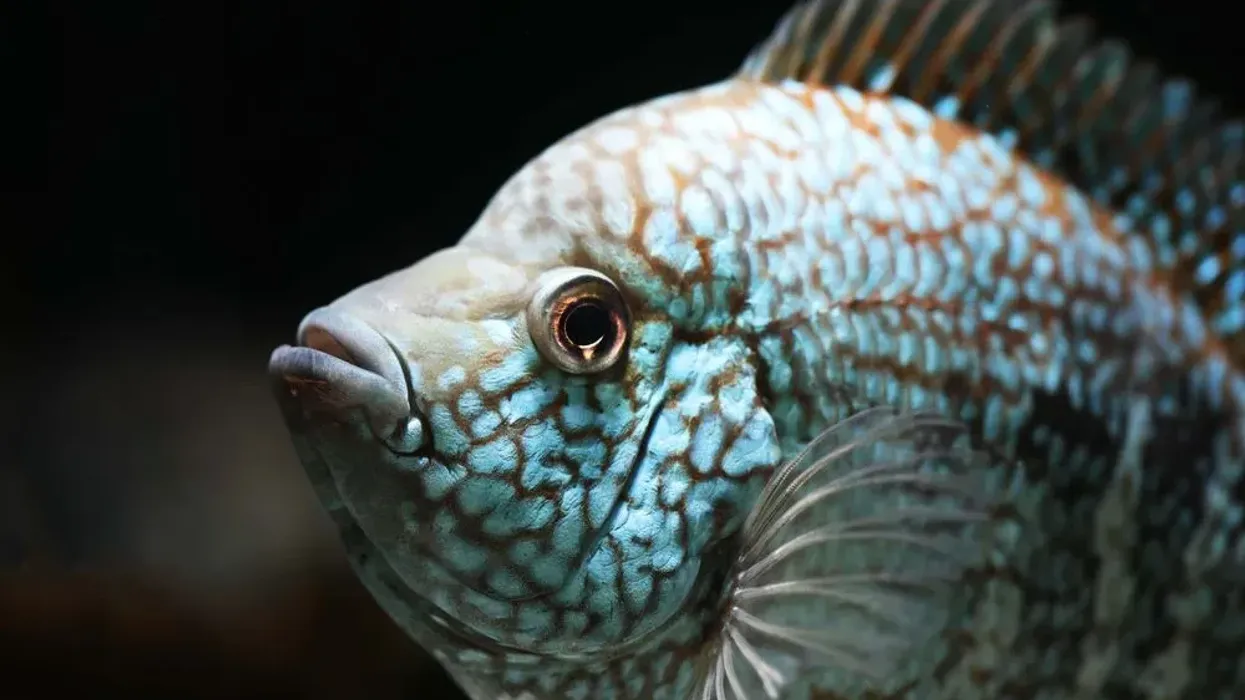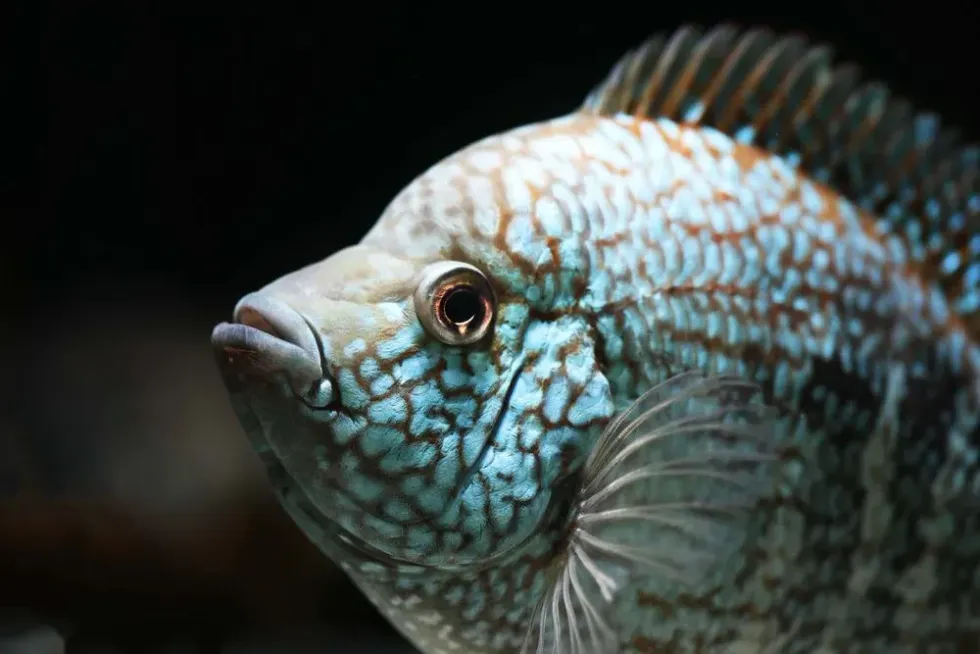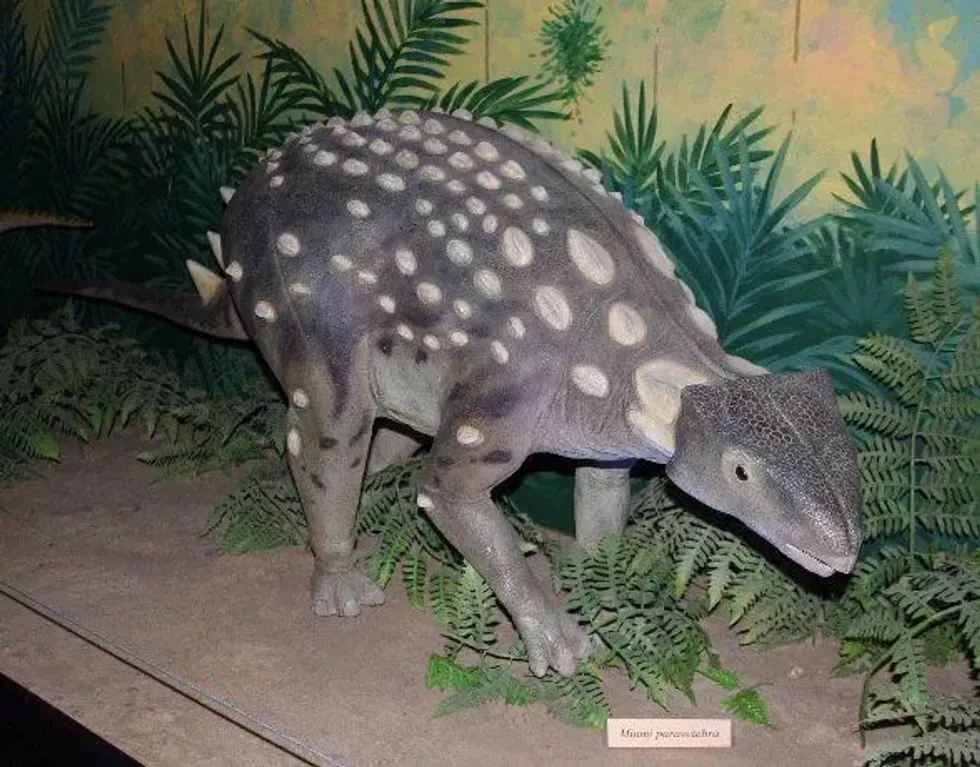The pearly Texas cichlid is one of the most beautiful types of cichlid fish in the world. They can be found in parts of the Rio Grande River located in southern Texas and northern Mexico and, despite their stunning appearance, they are known for being very aggressive and territorial towards other fish.
They're also very fierce and protective parents to their offspring.
The Texas cichlid is the only cichlid species native to the United States of America and it is often found in aquariums where it is loved for its beautiful features. Other names for this species include the pearl cichlid, the Rio Grande cichlid, and the Rio Grande perch.
In Mexico, the name for this fish is 'Mojarra del norte', which translates to North Mojarra.
If you like this article, check out our articles on the rainbow cichlid and the firemouth cichlid too.
Texas Cichlid Interesting Facts
What type of animal is a Texas cichlid?
The Texas cichlid is a type of fish belonging to the Cichlidae family. The Cichlidae family includes freshwater fish that are found all across the world, from America to Africa and Asia.
What class of animal does a Texas cichlid belong to?
The Texas cichlid belongs to the Actinopterygii class of ray-finned fishes. Ray-finned fishes are a clade of bony fishes and they get their name from their fin design which is made up of boney spines covered in webbed skin.
How many Texas cichlids are there in the world?
The exact population size of Texas cichlids across the world is unknown. There are at least 1650 known cichlid species in the world, but it is predicted that there are somewhere between 2000 and 3000 cichlid species, many of which we are still discovering!
Where does a Texas cichlid live?
The Texas cichlid is native to a section of the Rio Grande River which runs through Texas and the north of Mexico. They can also be found outside of the main river in streams and pools and river drainages in central Texas.
The fish has been introduced in other areas of the United States too such as Florida and Louisiana, and it was even introduced into the Philippines in the '70s!
However, it is unknown if any survived in the area. If you're lucky, you might be able to find them in your local aquarium where they'll turn the fish tank into a glorious display of color.
What is a Texas cichlid's habitat?
These fish tend to prefer sluggish waters and slower-moving parts of rivers for their habitat and are usually found living where there are lots of vegetation, rocks, and fallen tree branches.
Who do Texas cichlids live with?
Due to the Texas cichlid's feisty nature, they aren't a schooling type of fish. As these fish are very territorial, they tend to like their own space and will attack smaller fish and even eat them if they get the chance.
This includes fish in their species. When these fish are young, they will likely travel in groups for safety but adults become solitary, only traveling with their mating pair to protect their offspring.
How long does a Texas cichlid live?
The Texas cichlid has an average lifespan of 10 to 15 years. If you take really good care of your Texas cichlid, it can live up to 15 years in captivity.
How do they reproduce?
Texas cichlids are very easy to breed as they are very fertile, open spawning, egg layers. When Texas cichlids are ready to spawn (which is when they lay their eggs), their color changes drastically from blue and green to white and black.
The belly and back of the fish will turn black while the head and front half of the fish will turn white. The mating pairs will mate and dig in the substrate to clean their chosen spawning location.
The female will then lay 500 to 1000 eggs and the male follows closely behind to fertilize them.
The eggs take about three days to hatch, and the mating pairs guard them the whole time. Sometimes the parents will eat their fry if they are inexperienced breeders, but if they escape this fate, at around day four of their life, the fry becomes free-swimming.
What is their conservation status?
The Texas cichlid fish is listed as a Least Concern species. They are not under threat of extinction based on the fish's population and distribution levels.
Texas Cichlid Fun Facts
What do Texas cichlids look like?
The Texas cichlid is famous for its vibrant, turquoise, and cream-spotted scales, which give it a very distinct look. The scientific name for the Texas cichlid is Herichthys cyanoguttatus and 'cyanoguttatus' is the Greek word for 'blue spotted'.
While their scales are often blue or green in appearance, their background color is usually a light or dark green color. There are also red Texas cichlids and super green Texas cichlids, that are sure to amaze your eyes. Some Texas cichlid specimens also have dark, vertical stripes on their scales.
Texas cichlids have long and pointed dorsal and anal fins that extend past the thick part of their tail. Adult males can also develop a hump on the front of their heads, while females can develop black spots on their fins.

*Please note that this is an image of a discus cichlid, a relative of the Texas cichlid. If you have a royalty-free image of a Texas cichlid, please let us know at hello@kidadl.com
How cute are they?
Despite being a very fearsome fish, this Rio Grande perch is still pretty cute with its amazing colors and scales.
How do they communicate?
Cichlid fish have their social rankings and communicate through visual acoustic and chemical signals!
How big is a Texas cichlid?
These fish can grow up to 12 in (30.48 cm) long, making them 10 times bigger than a goldfish!
How much does a Texas cichlid weigh?
On average, they weigh between 1-2 lb (0.45-0.91 kg). The largest recorded weight of a Rio Grande cichlid was 2.02 lb (0.92 kg). This fish was caught in 2011 from Lake Dunlap.
What are the male and female names of the species?
The names for male and female Texas cichlids are simply female and male Texas cichlids.
What would you call a baby Texas cichlid?
A baby Texas cichlid is called a Texas cichlid fry.
What do they eat?
Texas cichlids are omnivorous fish and will eat pretty much anything they can! They survive on a mix of plants and any live foods they come across. Cichlids are even known to feed on small frogs and water snakes if they get the chance.
This is why they are sometimes called 'opportunistic carnivores'. They are very deliberate hunters, feeding on other small vertebrates and invertebrates where possible. Cichlids also use their scales to camouflage and sneak up on their prey when hunting.
Are they aggressive?
This fish is known for being an aggressive fish species that is very territorial. Both red and green Texas cichlids are aggressive, and this makes them a very harmful invasive species when they have been introduced into new habitats.
Known for their aggressive temperament, they are also able to scare off predators with the boney spines found on their dorsal, pectoral, anal, and pelvic fins.
Would they make a good pet?
While these fish are eye-catching, they are not recommended for beginner fish owners due to their aggressive nature. However, they can be a great addition to your tank if you are an experienced fish owner and have owned similar fish before.
Did you know...
Working out what sex a Texas cichlid is, is no easy task as the differences between males and females of this species are not always clear.
However, males tend to be brighter than females, slightly larger by a few inches, and they usually have a nuchal hump that protrudes from their heads. It is also believed that a male's fins are longer and sharper than a female's.
You should also be able to spot a female by looking for black spots on their dorsal fin that males do not have.
Do Texas cichlids have teeth?
Like some saltwater fish species, these specimens have two sets of teeth! The first is their normal set of teeth and the second is a set of pharyngeal teeth found in the back of their throat that help them grind and crush their food up.
Having Your Own Texas Cichlid
If you're looking to adopt your very own Texas cichlid, there are a few things you should know before you go ahead. As these fish are omnivorous, it's important to give them a balanced diet of plants and meaty foods.
They will pretty much eat anything so you don't need to worry about them having a fussy diet.
Try to include live foods in their diet such as worms, larvae, and insects as well as fish pellets.
If you are breeding Texas cichlid and your fish lays eggs, they will happily take brine shrimp into their diet. If brine shrimp is not available, crushed and flakey foods can be given to the young fish before they are big enough to eat fish pellets.
These fish need a minimum tank size of 75 gallons as they can grow as big as 12 in (30.48 cm) in size. If you love decorating your fish tanks with loose objects or plants, these fish may have other ideas.
This species is known for digging up any decorations or objects that owners try to keep in the tank and are often seen ripping plants apart, so it is best to design their tank home based on their natural habitat.
This can be replicated by using sand mixed and fine gravel, a few rocks, and sturdy plants. You definitely won't find them hiding behind too many plants very often as they love being active and swimming around.
These fish are also very sensitive to cold water and they thrive in warmer waters. They usually do not survive in water with a temperature lower than 49 F (9.4 C) so many sure your tank temperature is set correctly. Their preferred temperature is 71.5-77 F (21.94-25 C), so you will likely need a heater for your tank.
While keeping Texas cichlids poses little risk to humans, they are not suitable for a tank full of other fish. It is recommended that these fish have a tank to themselves due to their aggressive behavior.
However, if you want yours to have a little fish friend, you should only keep them with other large fish that are big enough to defend themselves against the aggressive nature of this cichlid.
Other Central or South American cichlid species could be good tank mates for your fish. Make sure the tank size is big enough to allow each of them enough territory to avoid any fish fights though!
Here at Kidadl, we have carefully created lots of interesting family-friendly animal facts for everyone to discover! Learn more about some other fish including the convict cichlid or the peacock cichlid.
You can even occupy yourself at home by drawing one on our Texas cichlid coloring pages.










